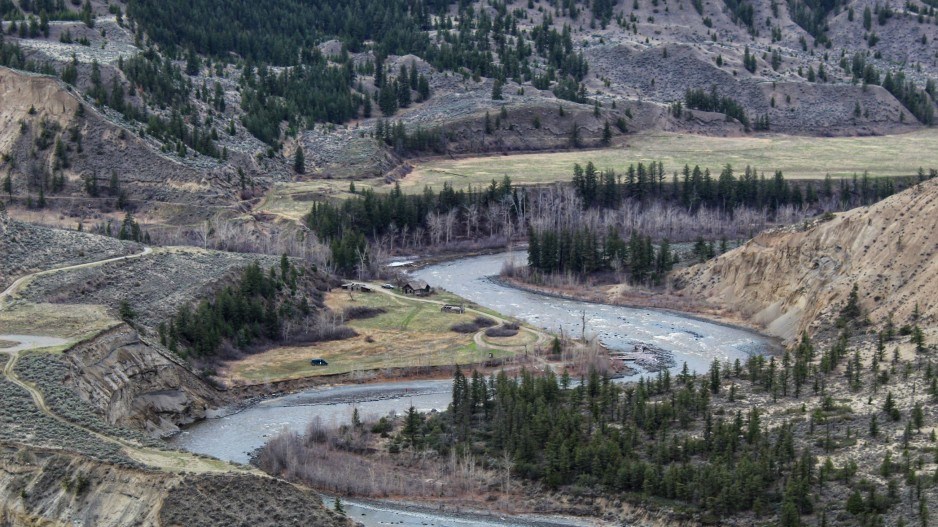The Tŝilhqot’in First Nation have a long history of defending their borders against non-aboriginal settlers and development, but now they are taking issue with a neighbouring First Nation.
The Williams Lake First Nation (WLFN) – who are part of the Secwépemc First Nation (Shuswap) – recently announced plans to undertake a land use planning exercise for Farwell Canyon on the Chilcotin River.
In a news release, the WLFN said the planning exercise would be “multi-dimensional and incorporate knowledge and data from a broad variety of sources, including archaeological research and surveys, environmental data, wildlife-related studies, and engagement with other First Nations, governments, and industry.”
“The area known by the settler name of ‘Farwell Canyon’ is a critical part of Northern Secwépemc Territory,” WLFN Chief Willie Sellars said in a recent news release.
“We have a rich and well-established historical connection to these lands, and our uses continue through to the present day. Unfortunately, there is not sufficient awareness of Secwépemc rights and values in the area of Farwell Canyon, and our management priorities have not always been recognized by government and industry."
The current Cariboo-Chilcotin Regional Land Use Plan is out of date, the WLFN say, having been established in 1994, prior to "many significant aboriginal title and rights developments."
"We feel there is a pressing need to fill some of the gaps in the current management tools, and to clearly assert ourselves as a critical decision maker with respect to the use and development of these Farwell Canyon lands," Sellars said.
But the Tŝilhqot’in First Nation say Farwell Canton is in the traditional territory of Tl’esqox – one of six Tŝilhqot’in communities.
“Williams Lake First Nation (WLFN) recently announced that it intends to start a ‘planning exercise” for Nagwentled,” the Tŝilhqot’in said in a press release today. “This is the latest public statement from WLFN asserting that Nagwentled is Secwepemc territory.
“WLFN did not reach out to Tl’esqox or the Tŝilhqot’in Nation before publicly announcing this ‘planning exercise’ in the backyard of Tl’esqox, in Tŝilhqot’in territory.
"WLFN did not invite our leadership to discuss this planning exercise or make any effort to engage our nation before issuing a press release. This approach is highly disrespectful to our nation and to our elders and members that cherish Nagwentled as Tŝilhqot’in lands.
“We would prefer to deal with this issue honourably, between nations, and not through press statements. However, given WLFN’s public statements and escalation of conflict, we have no choice but to issue this statement.”
In 2014, the Tŝilhqot’in made history when they became the first indigenous group in Canada to have the Supreme Court of Canada confirm that they held aboriginal title to specific lands in their claimed traditional territory.
Specifically, it was the Xeni Gwet’in – one of six Tŝilhqot’in communities – that had proven title to 1,750 square kilometres of Crown land southwest of Williams Lake in the Nemiah Valley in the Williams decision.
The Supreme Court also acknowledged that the Tŝilhqot’in had aboriginal rights to other lands outside the title area.
Following the William decision, the Tŝilhqot’in and B.C. government signed the Nenqay Deni Accord – a framework for implementing the ruling of the Supreme Court and addressing issues like Tŝilhqot’in governance.
That accord has been contested by the some members of the Secwépemc, as the westernmost portion of their traditional territory overlaps the eastern boundary of Tsilhqot’in territory in the Williams Lake region.
“The Tŝilhqot’in Nation opposes archaeological work or any other disturbance at Nagwentled without our approval,” the Tsilhqot’in Nation said in its release.
“We will be reaffirming to British Columbia and Canada that Nagwentled is Tsilhqot’in territory and that our people will always carry the responsibility to manage and steward these lands and waters.”




